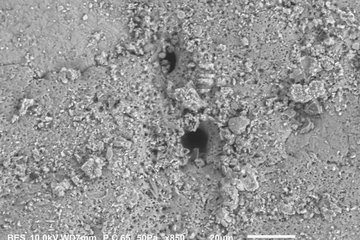Parental investment may have aided evolution of larger brains
New study explores evolution of larger brains in context of energy-intensive needs during growth
A review of evidence from prior research provides new support for the possibility that the evolution of larger brains in some species was enabled through increased energy investment by parents in their offspring. Carel van Schaik of the Max Planck Institute for Animal Behavior in Konstanz, Germany, and colleagues present their arguments in a paper published February 28th in PLOS Biology.

Between different species, larger relative brain size is associated with cognitive benefits that favor survival. However, larger brains come with higher energy costs. Prior research has examined these costs for adults in order to deepen understanding of evolutionary trends in brain size between different species. However, few studies have focused on the energy costs of the developing brain of young organisms.
To help fill that gap, van Schaik and colleagues addressed an apparent paradox: the larger a species’ brain, the more energy it requires during development—but large brains are not fully functional until well after they finish growing. This presents a “chicken-or-egg” or “bootstrapping” problem; most young offspring of larger-brained species should be unable to meet the energy demands of their own developing brains, raising the question of how larger brain size could have evolved.
The researchers hypothesize that warm-blooded species—which tend to have brains many times larger than cold-blooded species—evolved to have greater parental energy investment in their young, and this facilitated the evolution of larger brains.
Evidence from earlier studies

To examine this possibility, the researchers reviewed evidence from prior studies on the evolution of parental energy investment in young offspring. Warm-blooded species invest energy in their young through such actions as producing eggs, lactating, providing food, carrying, or huddling to stay warm. Most cold-blooded species simply release eggs.
Detailed analyses showed that greater energy investment in young indeed evolved alongside the evolution of larger relative brain size, and that this greater investment also could have improved young offspring’s chances of survival.
These findings support the hypothesis that greater parental energy investment in young offspring facilitated the evolution of larger brains, and that the inability to provide that sustained energy in species that merely lay eggs, in turn, limited the evolution of larger brains. Future research could build on this study to shed further light on how larger brains evolved.
van Schaik adds, “The evolution of extended parental provisioning beyond the egg stage unblocked a major evolutionary constraint on brain size, and therefore unleashed a massive expansion of brain size and cognitive potential among warm-blooded birds and mammals. Almost all of them feed their young after birth or hatching and have much larger brains than their cold-blooded relatives.”













